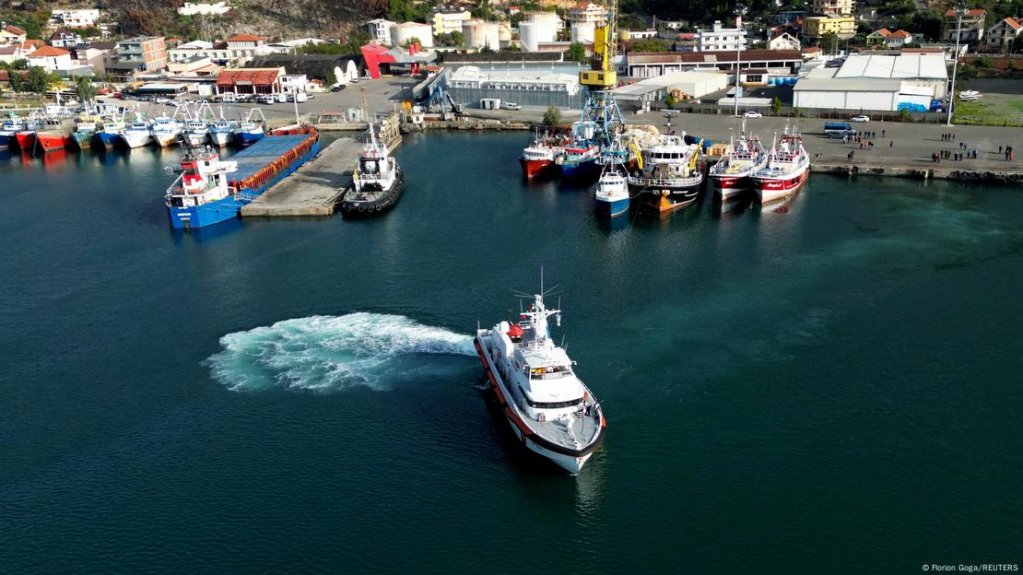The Italian government intends to use facilities it opened last October in Albania for the fast-track processing of asylum seekers into repatriation centers, after Italian courts repeatedly blocked the detention there of migrants rescued at sea.
The Italian government aims to turn two centers it opened in Albania, originally to process non-vulnerable asylum seekers rescued in international waters, into centers of permanence and repatriation -- CPRs.
The original function of the centers has been blocked by the Italian courts three times, resulting in the three small groups of migrants who were transported to Albania being returned to Italy within hours or days of arriving.
The new scheme hopes to send migrants in Italy, who have received an expulsion order, to the centers in Albania.
The two centres located in Shengjin and Gjader, which were opened last October and are currently empty, would in this way function as CPRs, explained a spokesperson for the government.
A decree to introduce the change is set to be discussed at a government meeting scheduled on March 28, according to well-informed sources.
Read AlsoItaly: Meloni vows to do everything she can to make Albania plan work
European Court of Justice sentence awaited
So far the project -- which has cost nearly one billion euros over a five-year investment -- has been a flop. After longer than expected construction work, the facilities were opened in October 2024, but the first three groups of migrants transferred there in October, November and January had to be brought back to Italy after Italian magistrates failed to validate their detention in the non-EU country.
The legislative offices of the interior ministry and the government have started working on the idea to use them - for the time being - as CPRs. They also hope that a sentence, expected to be issued by the European Court of Justice regarding safe countries for fast-track processing and repatriation expected by May-June this year, will enable the centers to be used according to their original purpose.
A new European treaty could also provide for the creation of more migrant hubs in non-EU countries.
At the moment, the center in Gjader already includes a CPR with 144 places, next to a center that can host up to 880 asylum seekers and a prison for 20. The facility in Shengjin only has a 'hotspot' to identify migrants without beds to host them.

Political disputes
In Italy, politicians on both sides of the political spectrum continue to argue about what the next steps should be regarding migration policy.
The center-left opposition claims that the "Albania model has failed," and has been urging Premier Giorgia Meloni "to cease" pursuing the scheme further.
The prime minister, on the other hand, has said that the centers will become operational even if she has to "work every night" on the issue "until the end of the Italian government."
On Monday March 24, Italian Interior Minister Matteo Piantedosi declared that the government hoped to activate new CPRs as soon as possible "given the need for recuperating available places in CPRs on the national territory."
Piantedosi was referring to the perceived lack of repatriation centers present in Italy, despite promises by this government to open "at least one in each region."
Migrants who are served an expulsion order for irregularly residing in Italy often remain free as there aren't enough places available in CPRs, say the government.
Read AlsoMeloni aims to relaunch Albania centers, possibly opening repatriation facilities
New decree
The government's idea -- which is set to be regulated under the new decree -- is for some of those expelled migrants to be transferred to the centers in Albania where they can be detained for a maximum of 18 months.
But members of the opposition have attacked the plan. Meloni and Piantedosi, said the leader of the center-left Democratic Party (PD) Elly Schlein "should stop and apologize for having squandered so many public resources in an inhuman protocol which tramples on fundamental rights and which has failed before even starting."
According to Alfonso Colucci, an MP from the Five-Star Movement (M5S), "in order to change the destination of use, the government needs to revise the protocol with Albania, with a relative passage in the Italian and Albanian Parliaments to approve the changes."
Colucci continued: "The treaty currently only allows for the transportation to Albania of people rescued in international waters by Italian Navy vessels and not of migrants who have been waiting to be expelled from Italy for months or years."
The leader of left-leaning Più Europa, Riccardo Magi, asked the premier, "for once, not to find excuses and tell Italians the truth: the centers in Albania have not worked and won't work." Magi stated.
